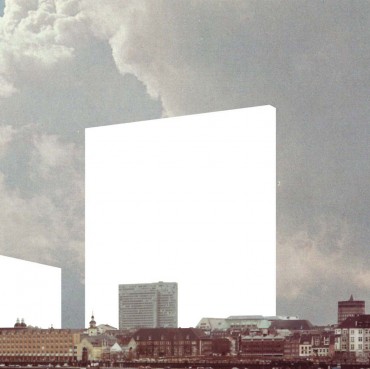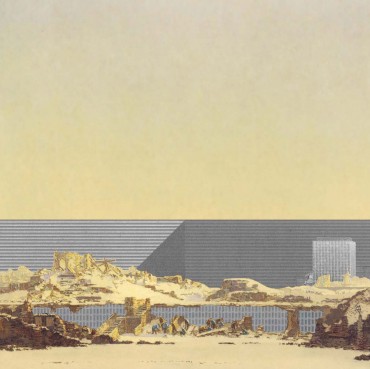Selected Topic
Issue 7 - On Canetti – Literature and Architecture: Letters, Words, Buildings (March 2012)
Show articles4.7.2012 – Issue 7 - On Canetti – Ramis Tomeu, Sauter Florian, Aureli Pier Vittorio – Videos, Studio, Interviews
Text + Project
Interview with Pier Vittorio Aureli
Besides your practical activities, you have written a lot. Theory and Practice go sort of hand in hand. How would you differentiate or relate these two forms of architectural expression?
It is a good question. First of all I do not believe in the separation of theory and practice, which is again another way to divide labor. I think whoever writes is also practicing something. Writing is very laborious, and sometimes, at least for me requires a lot of craft. At the same time, one who designs is thinking. Design is just a just a way to convey the architect’s way of thinking about space. For me they are two absolutely legitimate ways to engage with architecture in a very practical way. Personally, I never – and this is really important for me really – use my writings to support my architecture. Though it might have that kind of appeal, for me they are two equal tools, which use their own language – one is drawing, especially plans that do not need a theoretical explanation; and the other writing with its inherent logics. For me, when you draw a plan you make the highest imaginable statement – it’s like writing music. Writing works in the same lines in terms of a conceptual or ideological commitment towards architecture, as long as it does not support a project. If you read my writings, I at times even problematize the issues that perhaps I would take for granted in my designs. I never trusted architects, who actually wrote a kind of à posteriori propaganda of their designs. I admire those who actually used writing as a tool in its own terms, like Adolf Loos, Rem Koolhaas or Aldo Rossi. They are good examples, since their writing inevitably supported their projects, but was post-rationalizing them.
One could argue that the last 25 years have witnessed a clear lack of manifesto, or rather that the manifesto has moved from buildings to the city, in fact the description of cities. Do you think architectural production needs manifestoes?
Not necessarily. The manifesto was invented in the 19th century as a political instrument or format – of course, one of the first to use it was Karl Marx. Then the early avant-gardes adopted it to, in fact, politicise their work. Thus, the manifesto helped to politicise what were basically aesthetic programs into tools to redefine social conditions. The reason why manifestoes disappeared is that in the last 25 years, or even more, there has been a profound de-politicalization of society in general. So, manifestoes have become personal manifestoes, which is a contradiction in itself. The manifesto has not disappeared, but is fragmented into an array of different positions, which never unfold into clear fights or oppositions. It is funny, because I wrote a manifesto together with my students. It was a difficult process as I told them at the outset that we had to write it all together.
One of the beautiful things in literature is that with a few lines a good author can markedly describe a place – in a certain way distill the poetical essence of a site. Do you agree that architecture has a similar capability, or perhaps even obligation to awaken the secret drama of every location it acts upon?
I am very happy that you make this reference to poetry, since it is one of my greatest passions. I try to gently push it into my teaching experience; though, with little success, since it is always seen as either Romantic, or at best as something that requires a rather idiosyncratic taste for things. For me, poetry is where the problem of form is addressed in most radical terms. All poets are dealing with one fundamental problem: the transition from voice to language. From voice as a faculty of speech – an indeterminate potential – to language, where this inborn capacity in every human being has been captured and transformed into a form of communication, into language, one of the most fundamental power structures of society. So, for me, the poet has a great responsibility. All good poetry is not about meaning, it is not about narrative, but it is about trying to modulate the voice in a way that its potential is still there. For me, poetry is a paradigm: if you do not understand poetry, you cannot understand the world, you cannot understand politics, you cannot understand anything about architecture or anything that has to do with our own way of being. I think that architecture has a similar task like poetry – which again is a problem of form – since it formalizes the moment in which the inborn characteristics of the human animal are somehow contained into a structure. So I would say it is not so much about the drama of the site, but really about the problem of how we can within something that inevitably constrains human beings still have the power to create this surplus of something, which I do not even want to name as it would spoil in some kind of banal way its identity. There, I really think architecture and poetry come together.
Interview by Tomeu Ramis and Florian Sauter, ETH Zurich
Download article as PDF




